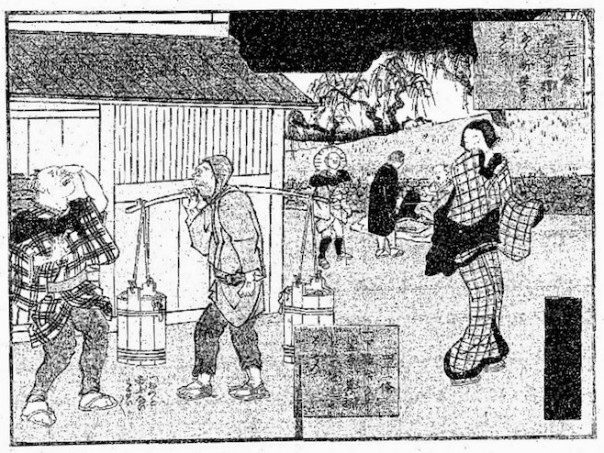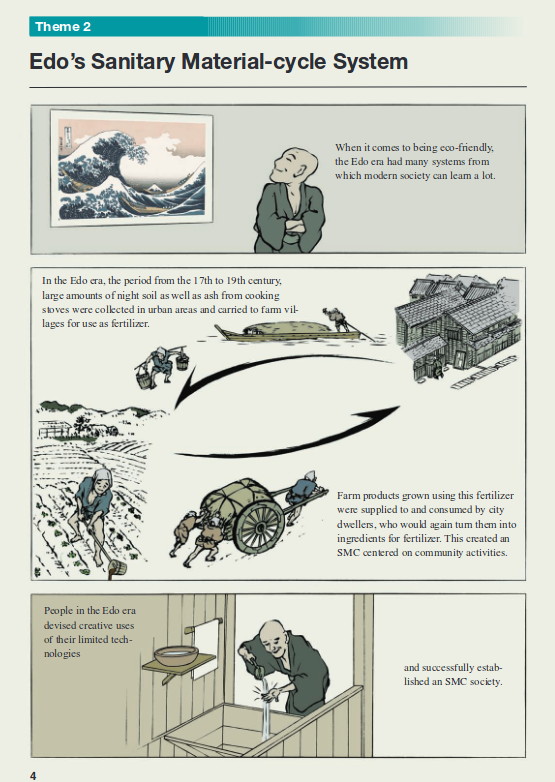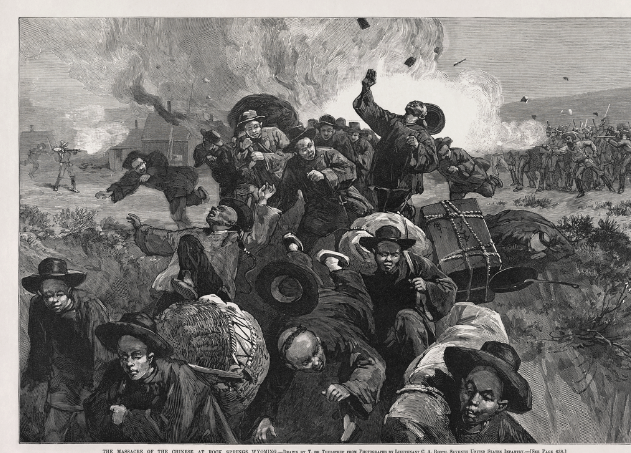This is based on a blog post from March 3, 2009.
I got into a discussion about fertilizing with human manure, and defended the practice, mainly because my grandmother did it.
I searched obsessively for information about the topic.
A few websites mentioned the Edo era in Japan, 1600 to 1863.
During the Edo era, Japan closed off trade with other countries, and lacked access to cheap sources of everything. In some sense, they had a closed, “sustainable” economy. They collected human feces and urine for use as fertilizer. They also collected ash, and mixed it with the feces to assist in the decomposition and balance out the fertilizer. (I guess that’s what my grandmother was doing too.) It was a business, to collect urine, feces and ashes, and produce fertilizer.
This is a picture of what a shit collector carried around.

The Japanese Ministry of the Environment has a good booklet about this Edo era waste management tech.
http://www.env.go.jp/recycle/3r/approach/hokusai_en.pdf
From page 4 of that booklet.

Pages 1 and 2 of the following pdf file state that this business was profitable and led to sanitary conditions better than in European cities at that time. Urban human waste was purchased from residents, converted to fertilizer, and sold to farmers. In European cities, feces went into the gutter and was never treated to create a benign fertilizer, and this spread disease.
When trade was opened up, cheaper fertilizers hit the market, and the shit peddlers were pauperized, and the city got dirtier. The government intervened to improve fecal collection and recycling, by giving shit peddlers an economic edge. At one time, all areas of Tokyo were served by these recyclers.
http://shinku.nichibun.ac.jp/jpub/pdf/jr/JN2006.pdf
This paper doesn’t say it, but, we could reduce our use of water and sewers if we put a high tax on fertilizers and chemicals, to subsidize recyclers, and went back to a system of inspired by early 20th century Tokyo (in 1910, the population of Tokyo was 2.1 million people).
Additionally, in the same timeframe of the late 1800s, it appears that English inventors were figuring out how to use human waste as fertilizer. Traditionally, Europeans (and Americans) crapped into deep cesspits, which were then covered over after years of use. The new technologies involved burying waste at shallow depths, where plants could access the nutrients.
http://journeytoforever.org/compost_humanure.html
(That page appears to have been updated with more good information.)
One of the big negatives about using feces as fertilizer is the risk of disease.
The most mentioned in the news is e. coli, which is present in all feces. According to the NIH, e. coli is present over 120 days after using raw manure as fertilizer.
To reduce the e. coli, composting or aging is recommended. E. coli decreases if the fertilizer is incorporated into the soil (rather than being placed on top of the soil), and the fertilization is done far enough ahead of time.
http://www.pubmedcentral.nih.gov/articlerender.fcgi?artid=525133







Leave a Reply